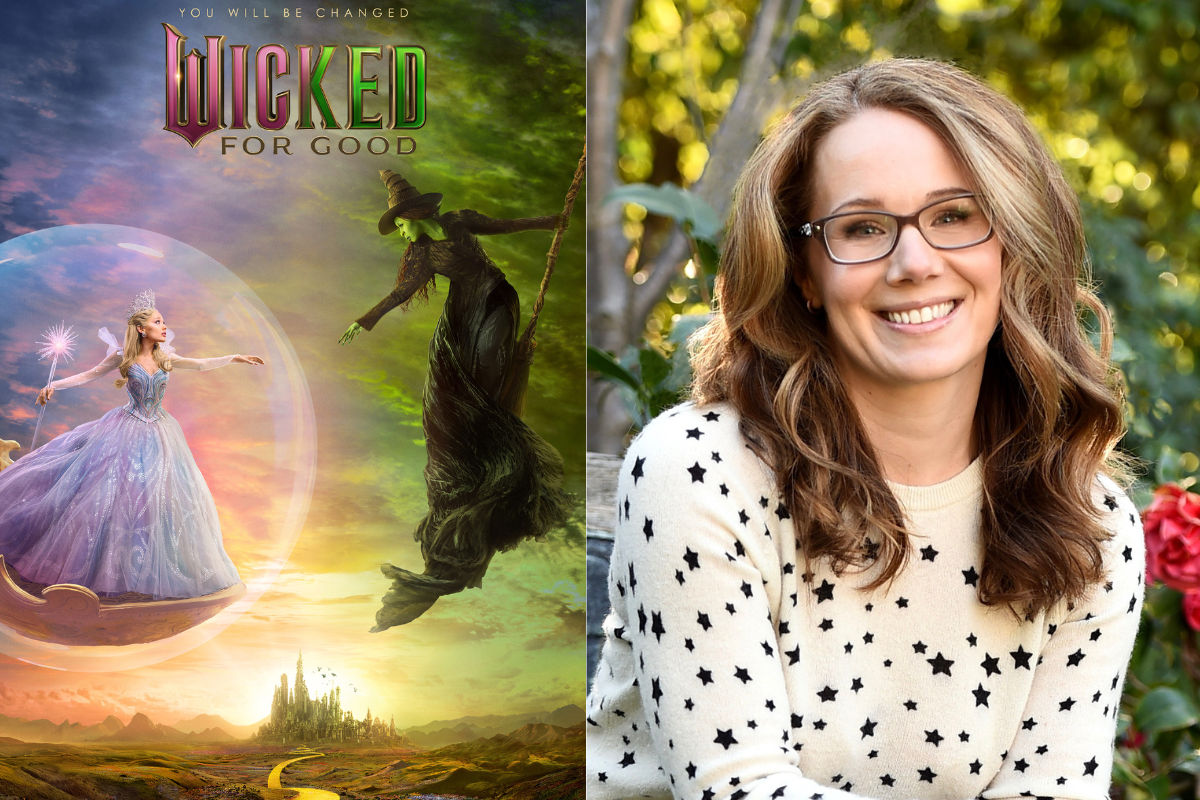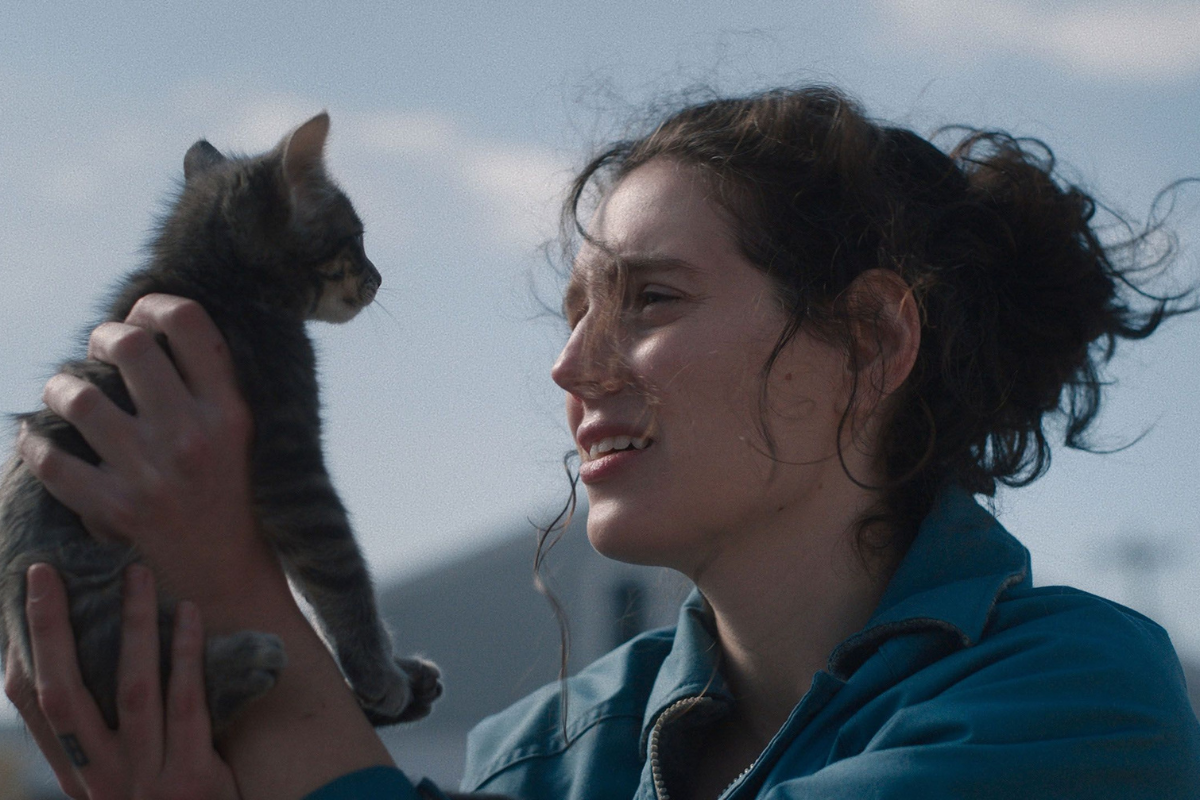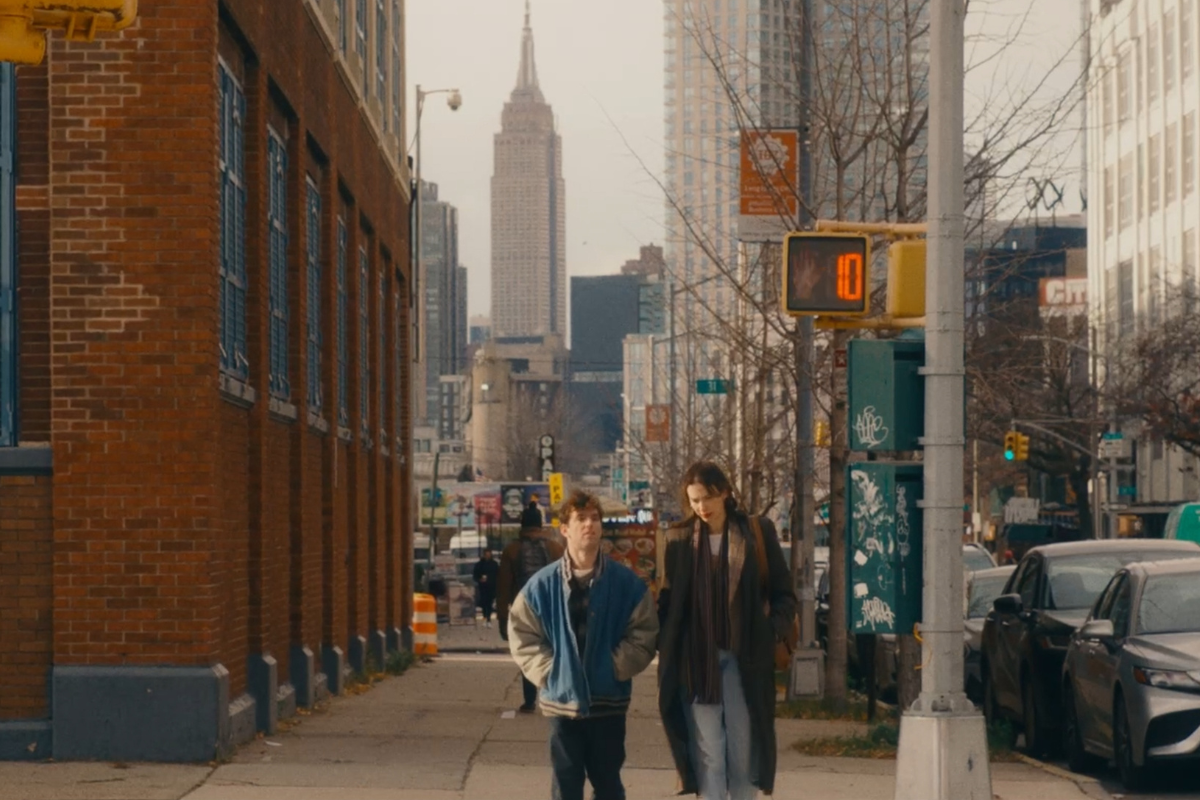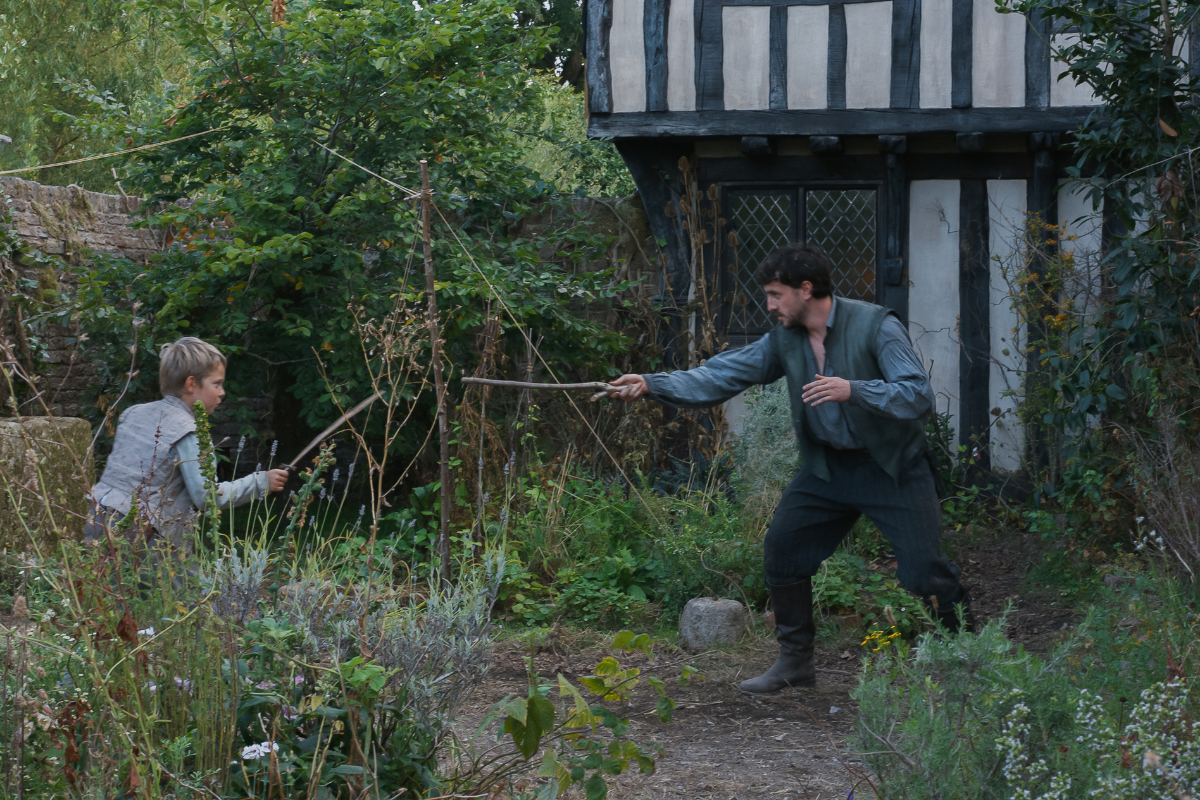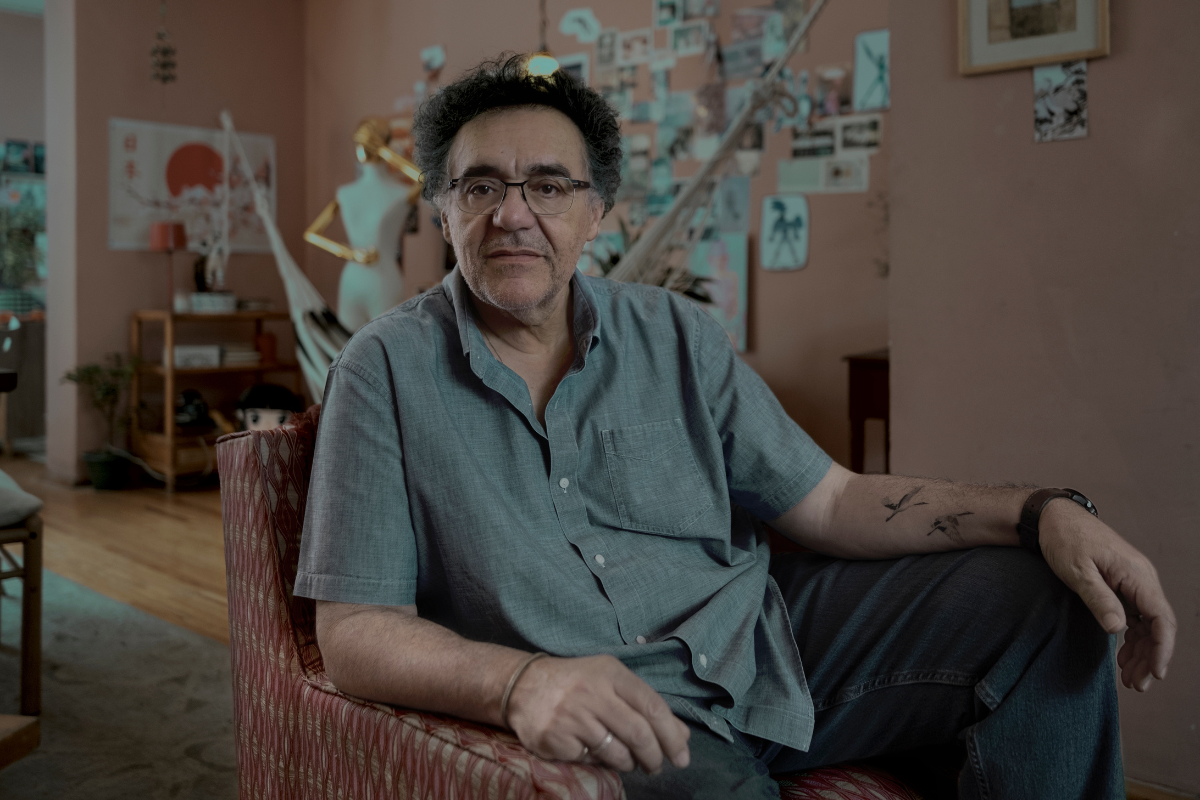The Director of ‘The Woman in Cabin 10’ Talks Hitchcock and Finding Your North Star
Filmmaker Simon Stone discusses adapting Ruth Ware’s novel, being inspired by Hitchcock, and finding your north star.
The Woman in Cabin 10 is an adaptation of the novel by Ruth Ware. Part psychological thriller, part gaslighting horror film, it stars Keira Knightley as a burned out journalist who recently watched one of her sources drown because they spoke to her and she feels deeply responsible for it. Her colleagues try to convince her to take some time off, but she’s a workaholic and doesn’t feel like it’s possible to take time off. When an invitation to cover a philanthropic donation aboard a cruise on a private yacht, thinking that’s the perfect escape, she agrees to take the assignment. When she sees a passenger fall overboard and becomes convinced it was the woman she saw in the cabin next to hers, her peaceful trip and easy assignment turns into a nightmare. Especially when no one else seems to believe that the woman ever existed in the first place.
The film, premiering on Netflix, is written and directed by Simon Stone. (There are other credited writers as well. In addition to the novel, there was an adaptation by Emma Frost, and the screenplay credit goes to Joe Shrapnel & Anna Waterhouse and Simon Stone). Stone is an Australian film and theatre director who started the Hayloft Project, a theatre company in Melbourne. It doesn’t take a leap to remind one of Orson Welles and the Mercury Theatre. With The Woman in Cabin 10, he brings the intensity of a live theatre experience and an almost locked room murder mystery from the point of view of one character to the screen and does so with elegant skill.
Stone and I had the chance to talk about his storytelling for Script magazine.
SCRIPT Magazine: How different is your approach for screenwriting than playwriting?
Simon Stone: I think writing a screenplay is 90% like writing a novel and 10% like writing a play. Most of it is descriptions of what things look like and what happens and describing, to a certain extent, the interior world. Also, I think a lot of people forget, screenplays have to fulfill two different functions and, to a certain extent, they also have to change in those two different functions.
The first one is to get people to give you money to make the film.
Screenwriting is a way of making people who may not read read between the lines—or you certainly can't take the risk that they don't read—and convincing them of all the different places your film will go to.
There are some writer-directors out there who can go—I mean, the extreme end of the example is Mike Leigh—there’s a location, and something happens, and I'm not going to tell you what happens because we're going to improvise that, and we're going to then decide that as we're making the movie. But people like that are finding it increasingly difficult to fund their movies because people are scared of the financial risk that that involves.
If you're Mike Leigh, it's because you've got a track record of having pulled it off.
I think you need to get to a certain point.
I'm sure Tarantino, for example, doesn't feel like his scripts are a pitch document. I think I think he feels like he's just getting rid of this movie that he wants to make and if he gets the right actors to want to be in it and his reputation alone. People are going to invest in the film.
But for the average screenwriter, even above average screenwriters, who are trying to get their movie made by the powers that be, and certainly the more expensive the budget's gonna be, you’re saying this is going to be awesome. This is going to be awesome. And this is going to be awesome. And this is going to be awesome. You're gonna feel this and this is gonna be awesome. And that, and then you have to take all of that stuff out when you give it to an actor because the actor goes, stop telling me it's going to be awesome and stop telling me how I'm going to act and stop telling me what people are going to feel, that’s up to me to decide.
And then it changes then again, and then it has to for shooting.
People start wanting to know what color the table has to be and if the location has a door in it or not. There’s all sorts of pragmatic questions there.
It's a blueprint for shooting a movie, it's not a piece of literature, but it works well when it feels like literature.
When it feels like a novel because people go, “Oh, wow, I could really see the room that's in.” But it’s mostly describing a series of events without a lot of dialogue, whereas my plays, I basically have no stage directions.
They're just, this dude says that, she responds.
He says that.
She says something else.
And, you know, I just published a book, a version of the play that's just opened in London, Lady From the Sea, and the publisher wrote back, “You know, you don’t ever say where the characters enter. You tell me when they leave, but you don't know when they enter.”
I was like, “Yeah, because usually they're leaving because they're pissed off or have to go somewhere. But when they enter is kind of up to the actor, because I know that they have to definitely be there by that point in time, the moment where they talk, then you know that they talk. But that'll be up to the actor and to the director of whatever production.”
So there's a lot of stuff that and if you ever said that to a film person. You just look like you don't know what you're doing. There's so much logistical stuff. If you don't put someone's name at the top of a page, even if they're not talking, then the 1st AD is not going to put them on the call sheet and they won't be there. There's just so many things that are just about the logistics of making a movie.
SCRIPT Magazine: How much of the writing changes on set as you're working with the actors versus how much is it changing in the editing room, and how much is locked in as you're going to actually shoot?
Simon Stone: I have a new philosophy which is, “Put slightly too many scenes in the script.”
People always say we need to get this script down, it’s got too many pages.
I'm like, yeah, you know, 10% of what goes into a documentary is what you actually shot. That would be an incredibly quick documentary, like, the percentages are insane.
Whereas in [narrative] films, I'd say that maybe 60-70% of what you shoot goes into a movie, sometimes more if it's an independent movie and you can't afford reshoots and stuff like that. So I think the idea of writing more, making sure that you've got options when you get to the editing room is really important. Having slightly too much dialogue because maybe it helps the actor get to the point that they need to get to to say the line that then will be in the film.
I would just do this with the shooting script, because obviously the script that goes to execs, they’d be like, “This took me too long to read.” “It wasn't at suspenseful,” et cetera, et cetera.
But once you're in the shooting script and you're with the actors and they're going, “I could say this and I could say that,” and then you can kind of go, “oh, great, well, let's just try that.”
Also, the other biggest kind of phase of writing for me is, especially on this movie, because of the yacht, is discovering the locations and tailor making. There's no point going, “Well, in the scene, we said it was going to be like this,” and people going, “Maybe it'll work slightly on this set, but it won't really.” You just go back and just rewrite it for the set that you found. You know, there's something true.
Truth will always be more fascinating than what you came up with in your mind. There's scenes in the film that I hadn't even conceived of until I'd been honestly been on board.
You're constantly rewriting the movie. You’re constantly refining what the story is that you're going to tell in the edit, of course. We did some reshoots at the beginning and the end of the film different to what they were on the first shoot and you rewrite those. You add some ADR that kind of changes the intentions slightly and it's a really fun process because the act of creating meaning doesn't stop until you lock the film right at the end, right before people watch it.
SCRIPT Magazine: The Woman in Cabin 10 feels very much like that locked room mystery.
It's got that modern take on the classic sort of Agatha Christie vibe, and she's been recreated on film and on stage tremendously over the last 100 years.
You’ve talked about how, in your writing, you always go for the modern, but also back to the canon and see how you can blend those as sort of your writing philosophy.
What of that was at work here on this project?
Simon Stone: I would say that Alfred Hitchcock's canon was more important to me than Agatha Christie.
I think, Ruth did a bit of a mix of the two in the novel, and I try to take it as much away from the Agatha Christie as I can. I don't think you can both do a paranoid conspiracy thriller and do which one of the charming guests is it while we're enjoying a cruise, you know? I think those are two competing narratives.
What to me is at the core of the film, when you see the twist, when you see the inherent premise of the underlying evil—which is always what these thrillers move towards, why was the evil that the core of this film enacted, and what are the kind of psychological threads that that led to that point—when you get there, it's a little bit hard, I think, to think, “Well, it's just a society murder or just a group of people and it could have been any of them.”
It's like, no, this is the deeply planned, very awful act of misogyny.
That level of kind of conspiracy thriller is one where you've got a lead character who's like, “I have to find out the truth, and I have to know what happened here, and even if nobody else believes me, I'm going to remain tenacious, and I'll get to the truth eventually, or it'll kill me.”
That’s the Hitchcock tradition. It's The Man Who Knew Too Much. It's Vertigo. It’s North by Northwest.
It's also the post-Watergate conspiracy thrillers like The Parallax View and Three Days of the Condor and All the President's Men, and The Conversation, et cetera, et cetera.
It's a single person—in this case a woman—fighting against the system and that seemed to be a more niche canon to look at. It also seemed to be one that resonated much more with the world that we're living in at the moment. Like less escapism, actually. I think it's a neat twist because it kind of sets itself up as a piece of escapism in the vein of Knives Out or whatever. You get invited, it's kind of a luxury situation, but then it goes, no, this is the world against this single person.
SCRIPT Magazine: As you say that, I think of the film and it feels like Hitchcock’s Rope if it were from Jimmy Stewart's perspective.
Simon Stone: Exactly!
I do think that. Hitchcock clearly was obsessed with a very ordinary person being the only obstacle to extraordinary evil. That's what's fun about this film. Usually it's a man, like it's Cary Grant or Jimmy Stewart, Robert Redford—you’ve got these kind of incredibly charismatic, but ordinary people just kind of going, “Hey, I won't stand for this.”
And it's dudes usually.
In this situation, what I loved is that there was an extra layer by it being a woman because of the kind of predisposition that society has to correct women's perception of things and to question the integrity of their opinion and their truth telling.
SCRIPT Magazine: In mystery thrillers, it’s the onus of the writer to balance the idea of playing fair with the audience and when you have a situation where you're trying to balance the idea that characters are specifically and purposefully gaslighting the lead, who is the point of view character, how did you approach balancing that feeling versus the clues you're dropping?
Simon Stone: I always hate the movies—unless you're gonna do it regularly—that just swap perspective just because you have to get get to a conclusion. I hate when you suddenly swap to the murderer's perspective because the showdown has to come.
It's so infuriating for me. I feel as if you have to follow the rules of perspective that you set up for yourself.
So actually, everything is from her POV. Until it's from Carrie’s, POV. Obviously, if you've watched the film, you'll know what Carrie’s POV means, you won't know if you haven't watched the film yet.
There's one section upstairs which is when Laura is locked up and that’s a very political decision because it's like, “OK, the cat is out of the bag,” but also the equivalent of the idea that Laura has handed over the mantle of the female that needs to find a way out of their horrible situation over to this. She becomes a cipher, for an avatar for low situation. And for women in general, therefore.
That's the moment it becomes political. And the showdown, then involves the third woman. Which means that network keeps expanding of, like, complicity, and the fight against the conspiracy.
Structurally, I think it's quite delicate and beautiful in that way. I was really obsessed with this. And that’s the difference with the Agatha Christie thing as well. Agatha Christie is happy for Poirot not to see everything that we see like that. Agatha decides when she stops it so that you don't know all the facts, but it's the author's decision.
It's not the character's inability to find out more. It's the author's decision to share. There is a kind of author. And I was really interested in what I love about The Parallax View is that if Warren Beatty hasn't seen it, it hasn't happened until he's seen it. It's still lurking. It's waiting, and that's what makes it so scary.
Like, what?
How huge is the criminals dam that I'm about to walk into?
SCRIPT Magazine: Any last advice for screenwriters working on movies or stories like in this vein?
Simon Stone: Find your North Star. Find your guiding light, you know? Watch infinite examples of how people have dealt with stuff. Then find a location or an environment so unique that it forces you to rewrite those tropes.
It's wonderful when you can't get them to fit into the scenario that you've then done it. You have to tell a different scenario. That's what's beautiful about Kurosawa's work. By virtue of it happening in Japan, he has to change it. it is both a reflection on contemporary Japan, but it's also an adaptation of the original piece.
As long as you always make it unique to the context that you live in, but try to be true to the guiding stars that you've got out there, then it'll have this kind of weird combination of the influences that are uniquely you.
The Woman in Cabin 10 is available now to stream on Netflix.
You can learn more about Bryan Young at his website.
Bryan Young is an award-winning filmmaker, journalist, and author. He's written and produced documentary and narrative feature films and has published multiple novels and a non-fiction book. He's written for Huffington Post, Syfy, /Film, and others. He's also done work in the Star Wars and Robotech universes. You can reach him on Twitter @Swankmotron or by visiting his website: swankmotron.com.


